Faishana Presents Pure Handloom Katan Silk Pink Kadhwa Tilfi Meenakari Stripe Jaal Kadhwa Border and Pink Blouse Saree
Faishana Presents Pure Handloom Katan Silk Pink Kadhwa Tilfi Meenakari Stripe Jaal Kadhwa Border and Pink Blouse Saree
SKU:PURESILK_17 AB
Couldn't load pickup availability
Low stock: 1 left
Faishana Banarasi's saree showcases pure craftsmanship with silk cut in a sophisticated shade of pink. It has stunning kadhwa meenakari Tilfi work, which exudes traditional beauty. The saree is embellished with elaborate kadhwa work and has a matching pink blouse. This stylish piece speaks to the rich handicraft heritage of Banarasi, making it the perfect choice for special occasions. This exquisite saree is available at the Faishana store, located at Mint House Nadesar, Andhrapul, and can also be purchased online through their website, [www.faishana.in](http://www.faishana.in).
A Pure Handloom Katan Silk Kadhwa Tilfi Meenakari Stripe Saree is a luxurious and intricately crafted saree that combines several traditional weaving techniques and embellishments. Here’s a detailed breakdown of its features:
1. Katan Silk Fabric
- Quality: Katan Silk is known for its fine texture, smooth finish, and natural sheen. It is a high-quality silk fabric that is prized for its luxurious feel and durability.
2. Kadhwa Weaving Technique
- Intricate Motifs: Kadhwa is a traditional handloom weaving technique where each motif is woven separately by hand. This technique allows for intricate designs such as floral patterns, paisleys, or geometric shapes.
- Zari Work: Genuine zari threads, typically made from pure silver coated with gold, are intricately woven into the saree. Zari is used to highlight motifs, create borders, and add a shimmering effect to the fabric.
3. Tilfi Weaving
- Meenakari: Meenakari refers to the art of adding colorful enamel work to metal surfaces. In the context of sarees, Meenakari involves weaving metallic threads with silk to create patterns that resemble enamel work. This technique adds vibrant colors and a unique texture to the saree.
4. Stripe Pattern
- Design: The saree features a stripe pattern, where stripes of varying widths and colors run horizontally across the fabric. These stripes can alternate between solid colors and intricate woven patterns, creating a visually dynamic look.
5. Cultural Significance and Craftsmanship
- Heritage Craft: The creation of a Pure Handloom Katan Silk Kadhwa Tilfi Meenakari Stripe Saree involves preserving traditional weaving techniques and cultural heritage. Skilled artisans meticulously weave each saree, ensuring attention to detail and quality craftsmanship.
6. Usage and Occasions
- Special Events: Such sarees are typically worn on special occasions such as weddings, festivals, and celebrations. They are prized for their elegance, cultural significance, and ability to make a statement.
Care and Maintenance
- Dry Cleaning: Due to the delicate nature of silk and zari threads, it is recommended to dry clean Pure Handloom Katan Silk sarees to maintain their quality and preserve the intricate designs.
- Storage: Store the saree in a cool, dry place away from direct sunlight. Fold it carefully to avoid creasing and maintain its shape.
In conclusion, a Pure Handloom Katan Silk Kadhwa Tilfi Meenakari Stripe Saree represents a harmonious blend of traditional weaving techniques, luxurious silk fabric, intricate zari work, and vibrant Meenakari patterns. It is a testament to the skill and artistry of Indian craftsmen and is cherished for its beauty and cultural significance.
Preparing Pure Katan Silk involves several meticulous steps to transform raw silk fibers into the luxurious fabric known for its smooth texture and natural sheen. Here’s an overview of the preparation process:
1. Silk Filament Extraction
- Silkworm Cultivation: The process begins with cultivating silkworms (typically Bombyx mori) in controlled environments. These silkworms feed on mulberry leaves and produce silk filaments as they spin their cocoons.
- Cocoon Harvesting: After about 25-30 days, the silkworms spin cocoons made of silk filaments. The cocoons are carefully harvested to preserve the length and quality of the filaments.
2. Degumming
- Boiling the Cocoons: The harvested cocoons are then boiled in hot water to soften the sericin, a natural gum-like substance that holds the filaments together.
- Separating Filaments: Once softened, the filaments are carefully unraveled from the cocoons. Several filaments are typically twisted together to form a single silk thread, known as raw silk or silk yarn.
3. Twisting and Reeling
- Twisting: The silk filaments are twisted together to create stronger and more durable silk threads. This twisting process can vary in intensity and direction, affecting the final texture of the silk.
- Reeling: The twisted silk threads are reeled onto spools or bobbins. This step ensures that the silk threads are neatly wound and ready for the next stages of processing.
4. Weaving Preparation
- Yarn Preparation: The reeled silk threads are then ready for weaving. Depending on the desired thickness and texture of the fabric, multiple silk threads may be twisted together to form thicker yarns.
- Dyeing (Optional): If colored silk is desired, the silk yarns may undergo dyeing using natural or synthetic dyes. This step ensures uniform color distribution and enhances the aesthetic appeal of the silk.
5. Weaving
- Handloom Weaving: Katan Silk is traditionally woven on handlooms by skilled artisans. Handloom weaving allows for intricate patterns and designs, such as Kadhwa (where motifs are woven individually) or Meenakari (enamel-like patterns woven with metallic threads).
- Mechanized Weaving: In some cases, Katan Silk may also be woven on mechanized looms, which offer efficiency and consistency in production while still maintaining quality craftsmanship.
6. Finishing
- Washing and Polishing: After weaving, the silk fabric undergoes washing to remove any residual chemicals or impurities. It is then polished to enhance its natural sheen and softness.
- Quality Inspection: Each batch of Katan Silk undergoes rigorous quality checks to ensure that the fabric meets standards for texture, strength, color, and overall appearance.
7. Packaging
- Final Inspection and Packaging: Once the silk fabric passes quality inspection, it is carefully folded and packaged. This packaging ensures that the silk fabric remains pristine until it reaches its destination.
Conclusion
Preparing Pure Katan Silk involves a blend of traditional techniques, craftsmanship, and attention to detail. From cultivating silkworms to weaving the fabric on handlooms, each step in the process contributes to creating the luxurious and highly prized Katan Silk known for its quality, durability, and timeless appeal in traditional Indian textiles.
The weaving process of a Minakari Kadhua Katan Silk Banarasi saree involves a combination of traditional handloom techniques and intricate craftsmanship. Here’s a detailed overview of the weaving process:
1. Selection of Raw Materials
- Katan Silk Yarn: The process begins with selecting high-quality Katan Silk yarn, known for its fine texture and durability. The yarn may be sourced from specialized silk farms to ensure premium quality.
- Zari Threads: Genuine zari threads, made from pure silver coated with gold, are selected for their luxurious sheen and durability. Zari is a crucial component in Banarasi sarees, used for weaving intricate designs and borders.
2. Designing the Saree
- Pattern and Motifs: The saree design is meticulously planned, incorporating traditional motifs such as florals, paisleys, vines, or geometric patterns. These designs are typically inspired by nature, Mughal art, or historical architecture.
3. Preparing the Loom
- Setting Up Warp and Weft: The handloom is prepared with the warp (lengthwise threads) and weft (crosswise threads) yarns. The number of threads and their arrangement on the loom determine the width, length, and pattern of the saree.
- Jacquard Looms: Many Banarasi sarees, including Katan Silk sarees, are woven on Jacquard looms. These looms are equipped with punched cards or computerized systems that lift individual warp threads to create intricate designs and patterns.
4. Kadhua Weaving Technique
- Handweaving: Kadhua weaving is a traditional technique where each motif is woven separately by hand. This process involves intricately inserting zari threads along with silk threads to create raised patterns and designs on the fabric.
- Minakari (Meenakari): In the context of Banarasi sarees, Minakari refers to the art of weaving colorful metallic threads into the fabric to create patterns that resemble enamel work. These threads add vibrant colors and texture to the saree, enhancing its visual appeal.
5. Integration of Zari
- Zari Work: Genuine zari threads are used extensively in Banarasi sarees. These threads are woven into the fabric to outline motifs, create borders, and add a shimmering effect. Skilled weavers carefully integrate zari to ensure precision and uniformity in the design.
6. Finishing Touches
- Quality Control: Throughout the weaving process, the saree undergoes rigorous quality checks to ensure that the motifs are well-defined, the zari work is intact, and there are no defects in the fabric.
- Final Touches: After weaving is complete, the saree is washed to remove any residual starch or impurities. It is then carefully folded and packaged, ready to be showcased and worn.
Cultural Significance and Artistry
- Craftsmanship: Weaving a Minakari Kadhua Katan Silk Banarasi saree requires skilled craftsmanship and a deep understanding of traditional weaving techniques. Each saree is a labor of love, reflecting centuries-old traditions and cultural heritage.
- Symbolism: These sarees are not just garments but symbols of elegance, tradition, and cultural pride. They are worn during weddings, festivals, and special occasions, embodying the wearer’s connection to Indian heritage and craftsmanship.
In conclusion, the weaving process of a Minakari Kadhua Katan Silk Banarasi saree is a meticulous art form that blends traditional techniques with artistic creativity. It celebrates the beauty of silk, the brilliance of zari, and the timeless allure of Indian textile craftsmanship.
Creating a Kadhwa blouse to complement a saree involves incorporating intricate weaving techniques and thoughtful design elements to enhance its beauty. Here are some tips to make a Kadhwa blouse that adds extra charm and elegance:
1. Choosing Fabric and Zari
- Fabric Selection: Select a high-quality fabric that complements the saree. Silk or cotton fabrics work well for Kadhwa blouses due to their ability to hold intricate designs.
- Zari Threads: Opt for genuine zari threads made from pure silver coated with gold for a luxurious shimmer. The zari should be of high quality to ensure durability and brilliance.
2. Design Elements
- Motifs and Patterns: Choose traditional motifs such as florals, paisleys, vines, or geometric shapes that complement the motifs on the saree. Consistency in design motifs between the blouse and saree enhances the overall look.
- Border Designs: Incorporate intricate borders along the neckline, sleeves, and hemline of the blouse. Borders add definition and elegance to the blouse, aligning with the saree’s borders.
3. Weaving Techniques
- Kadhwa Weaving: Use the Kadhwa weaving technique, where each motif is woven separately by hand. This technique allows for raised patterns and intricate detailing that stand out on the blouse.
- Incorporate Zari: Integrate zari threads into the blouse’s fabric to outline motifs, create borders, or highlight specific parts of the design. Zari adds a touch of luxury and sophistication to the blouse.
4. Color Coordination
- Color Palette: Coordinate the colors of the blouse with the saree’s palette. Match or complement the dominant colors of the saree to create a cohesive and harmonious look.
- Contrast Effect: Alternatively, opt for a contrasting color for the blouse to make a bold fashion statement. Ensure the contrast enhances the overall aesthetic without overwhelming the saree’s design.
5. Finishing Details
- Embroidery and Embellishments: Consider adding embroidery or embellishments like sequins, beads, or stones to further enhance the blouse’s beauty. These details can be strategically placed to highlight key elements of the design.
- Neckline and Back Design: Pay attention to the neckline and back design of the blouse. Embellishments and intricate weaving on these areas can elevate the overall appeal of the blouse.
6. Fit and Tailoring
- Tailored Fit: Ensure the blouse is well-fitted and tailored to complement the wearer’s body shape. A well-fitted blouse enhances comfort and confidence while wearing the saree.
7. Maintenance and Care
- Dry Cleaning: Due to the delicate nature of silk and zari, dry clean the Kadhwa blouse to preserve its quality and intricate details.
- Storage: Store the blouse in a cool, dry place away from direct sunlight. Proper storage helps maintain the fabric’s integrity and prevents damage to the embellishments.
By carefully incorporating these elements into the design and creation of a Kadhwa blouse, you can create a stunning piece that not only complements but also enhances the beauty of a saree. The craftsmanship and attention to detail in a Kadhwa blouse make it a timeless and elegant addition to any traditional ensemble.
Yes, Pure Silk Handloom Katan Silk Banarasi sarees are indeed famous and highly regarded for their exquisite craftsmanship, luxurious fabric, and cultural significance. Here are some reasons why they are renowned:
1. High-Quality Silk Fabric
- Katan Silk: Known for its fine texture, smooth feel, and natural sheen, Katan Silk is a premium variety of silk. It is lightweight yet durable, making it comfortable to wear for various occasions.
2. Traditional Handloom Weaving
- Handloom Craftsmanship: Banarasi sarees, including those made from Katan Silk, are traditionally woven on handlooms by skilled artisans. The weaving process involves intricate techniques like Kadhwa (where motifs are woven separately) and Jangla (intricate mesh patterns), which require meticulous attention to detail.
3. Intricate Designs and Patterns
- Motifs and Borders: Pure Silk Handloom Katan Silk Banarasi sarees feature elaborate designs such as floral motifs, paisleys, geometric patterns, and traditional Indian motifs. These designs are often inspired by Mughal art, nature, and architectural elements.
4. Zari Work
- Use of Genuine Zari: Zari threads made from pure silver coated with gold are intricately woven into the saree to create borders, highlight motifs, and add a shimmering effect. Genuine zari enhances the saree’s elegance and adds a touch of luxury.
5. Cultural and Occasional Wear
- Weddings and Festivals: These sarees are popular choices for weddings, festivals (such as Diwali and Eid), and other special occasions in India. They symbolize tradition, grace, and cultural heritage, making them an integral part of celebratory attire.
6. Craftsmanship and Heritage
- Artisan Skills: Making Pure Silk Handloom Katan Silk Banarasi sarees requires specialized skills passed down through generations of weavers in Banaras (Varanasi), India. Each saree is a testament to the rich heritage and craftsmanship of Indian textiles.
7. Global Appeal
- International Recognition: Banarasi sarees, including those made from Katan Silk, have gained recognition worldwide for their beauty, craftsmanship, and cultural significance. They are worn by women not only in India but also globally, showcasing India’s textile traditions.
8. Versatility
- Styling Options: Pure Silk Handloom Katan Silk Banarasi sarees offer versatility in styling. They can be draped in various traditional and contemporary ways, adapting to different preferences and fashion trends.
In summary, Pure Silk Handloom Katan Silk Banarasi sarees are famous for their luxurious silk fabric, intricate weaving techniques, rich designs, and cultural significance. They represent the epitome of Indian textile artistry and continue to be cherished as timeless pieces of attire for special occasions and celebrations.
Note:- To enhance customer satisfaction, Faishana offers video call facilities and can share videos and images of their sarees directly with customers via WhatsApp at +91-8808321678 and +91-7654321678. This Product is Handwoven, there may be some minor irregularities that are a characteristic feature of genuine Handmade Products but that make a woven saree unique. We pledge to cease child labor. This product ships worldwide.
Brand Name:- Faishana Belong To Banaras By Powertech Infraenergy Pvt Ltd
Product Dimension:- Saree Length:- 5.5 Mtrs, Unstitched Blouse Length:- 0.80 Mtrs (attached)
Fall & Pico:- Extra Rs. 350/-
Tassels:- It takes 4 to 6 days to make your product ready with tassels and dispatch
Manufactured & Marketed By:- M/s Powertech Infraenergy Private Limited
Country of Origin:- India
Head Store Address:- M/S Powertech Infraenergy Pvt Ltd, S 19/7-X-3, Varuna Bridge, Mint House, Nadesar, Varanasi, Uttar Pradesh-221002, India Contact No:- +91-7654321678, +91-8808321678
Branch Store Address:- M/S Powertech Infraenergy Pvt Ltd, S 14/ 18-1 KH-1K, 1st Floor, Raniya Mahal, Andhrapul, Teliyabagh, Varanasi, Uttar Pradesh-221002, India Contact No:- +91-7654321678, +91-8808321678
Disclaimer:- Benares, now known as Varanasi, is the oldest continuously inhabited city globally, located in India. Its original name, Kashi, is derived from the Sanskrit words meaning "Light" or "Enlightenment." Varanasi is renowned for its skilled handloom weavers who create intricate designs on fabrics. These designs are unique to their tradition and incorporate intricate floral and foliate motifs.
Assured Quality
Assured Quality
Our products consist of good quality raw materials used, which assures you of the desired quality product.
Ready to Ship
Ready to Ship
Expertly Cross-Checked Products Ready to Ship from Our Warehouse.
Exchange & Returns
Exchange & Returns
Shop with confidence! We take customer satisfaction seriously. That's why we offer a 3-day, hassle-free return policy. No worries if something isn't quite right. Simply bring it back in its original packaging within 5 days, and we'll happily exchange it for something you love or give you store credit for a future purchase. The choice is yours! For complete details, check out our return policy. But for now, happy shopping!
Share
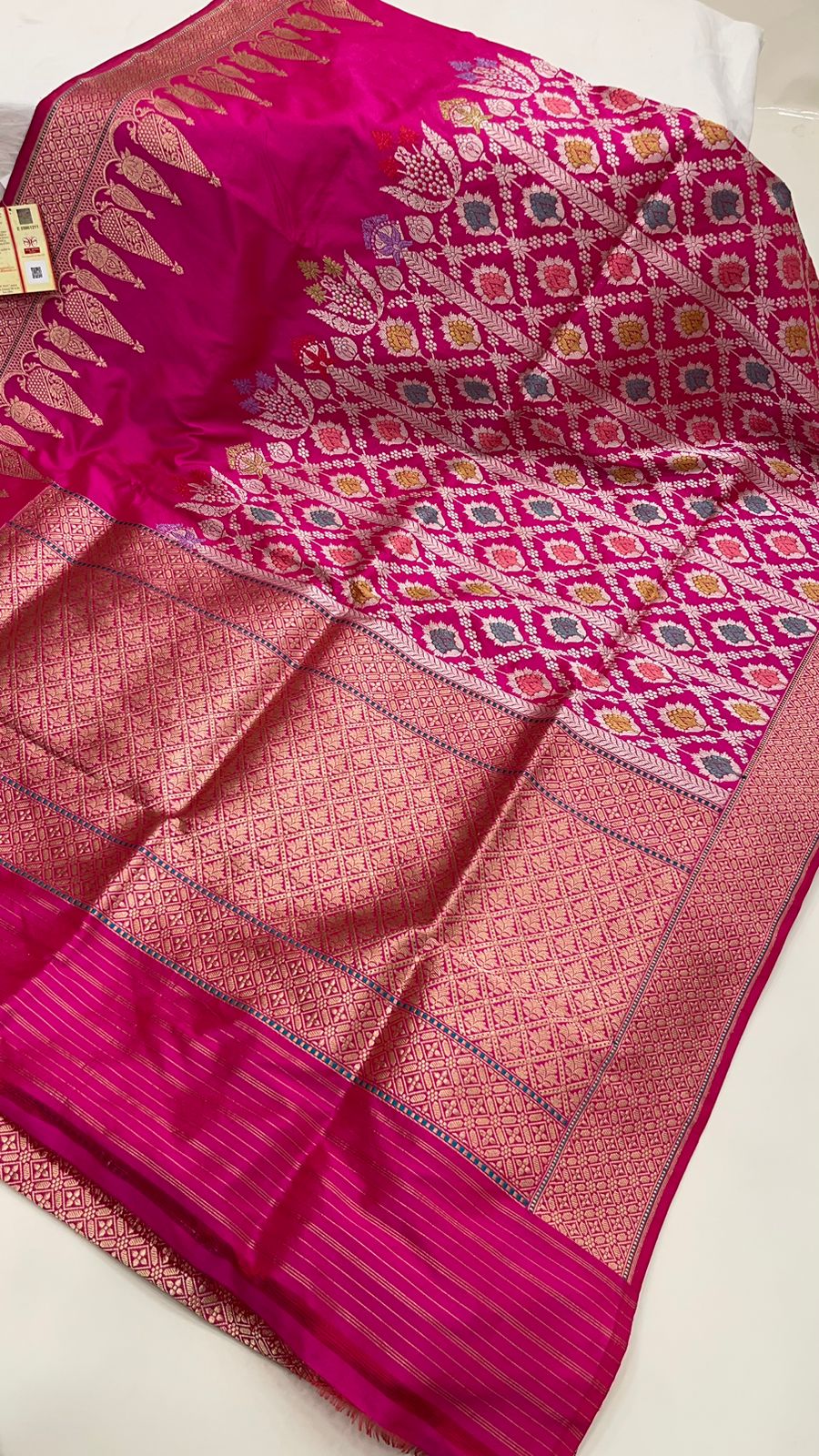
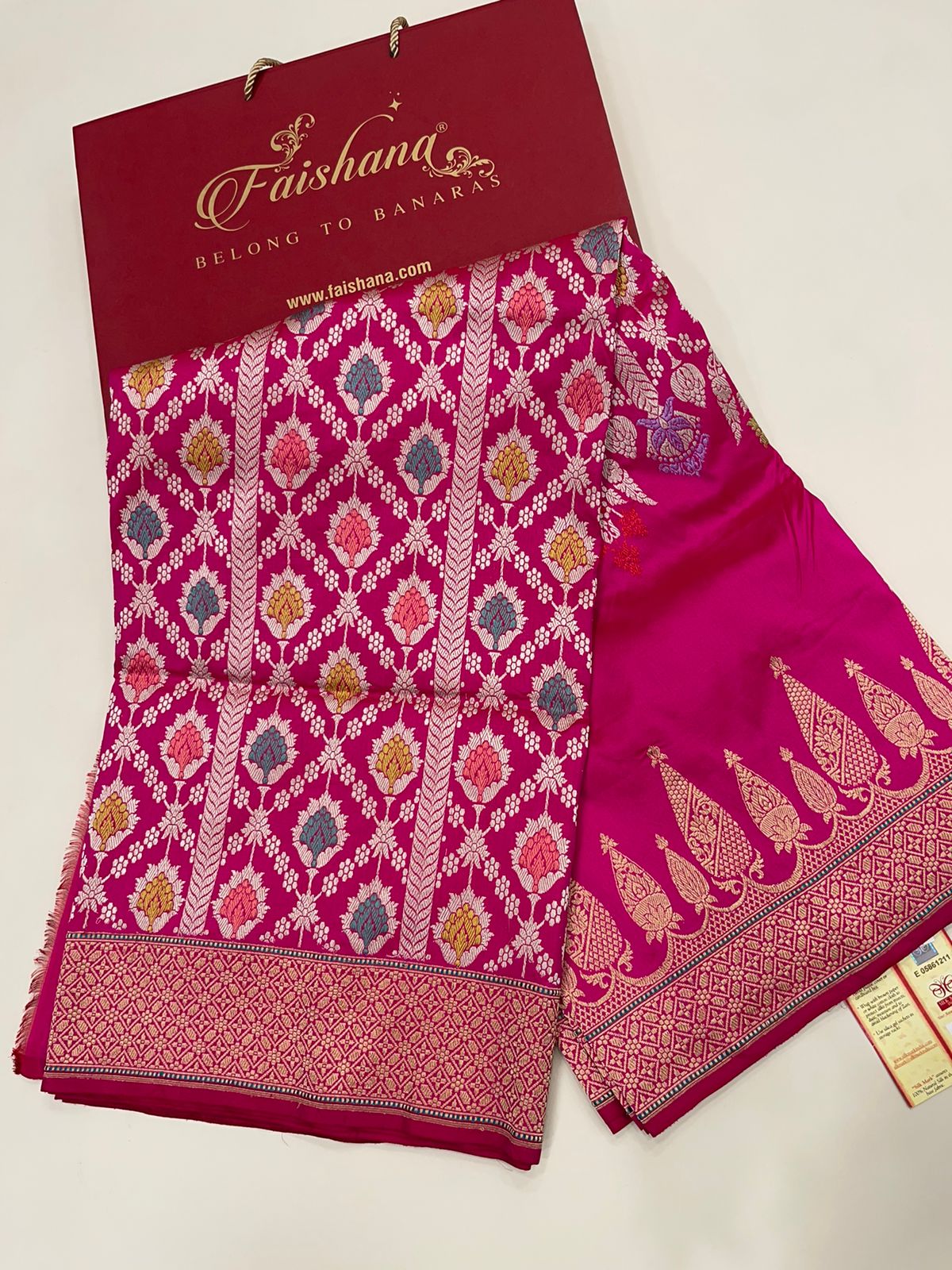

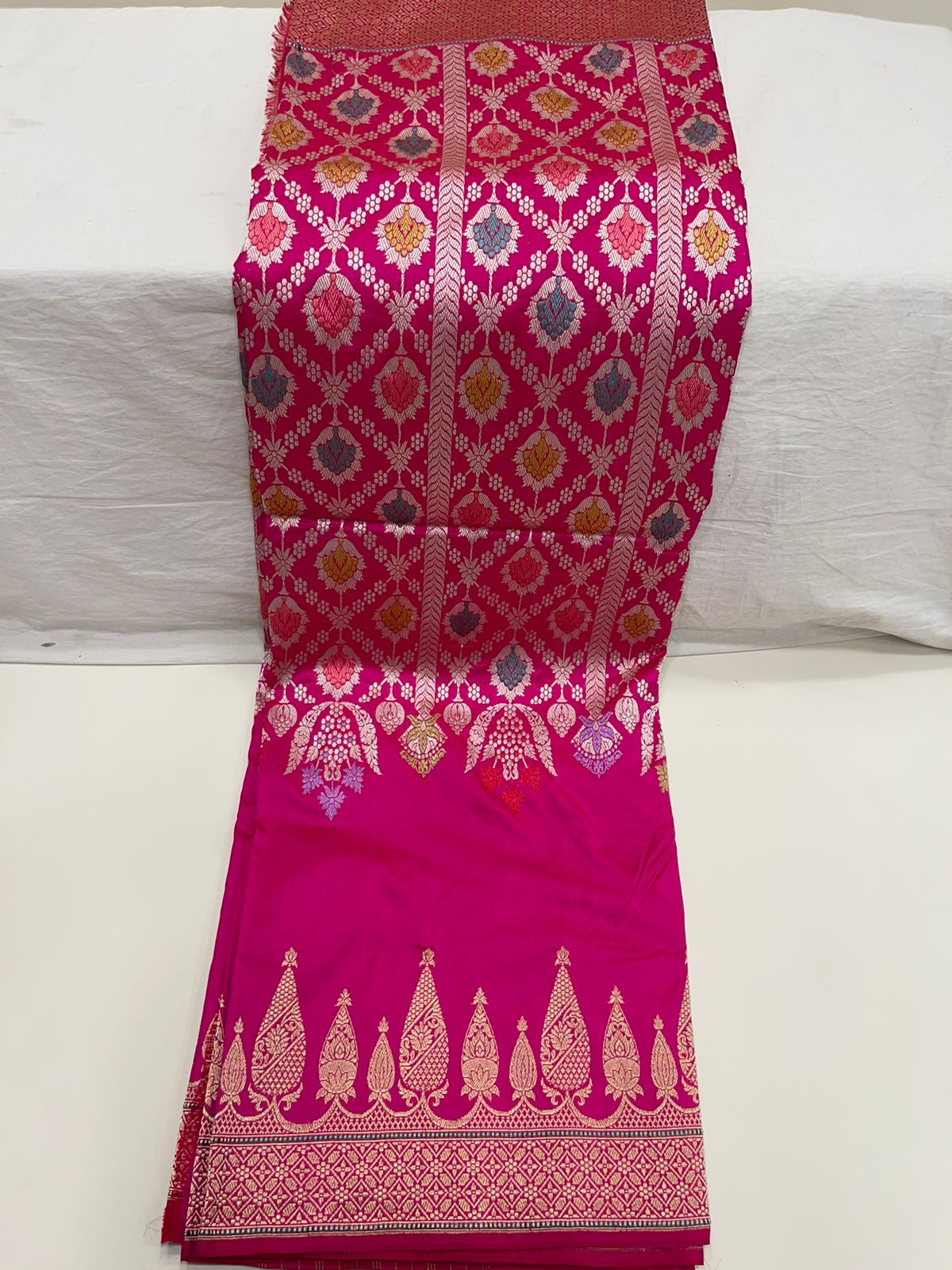
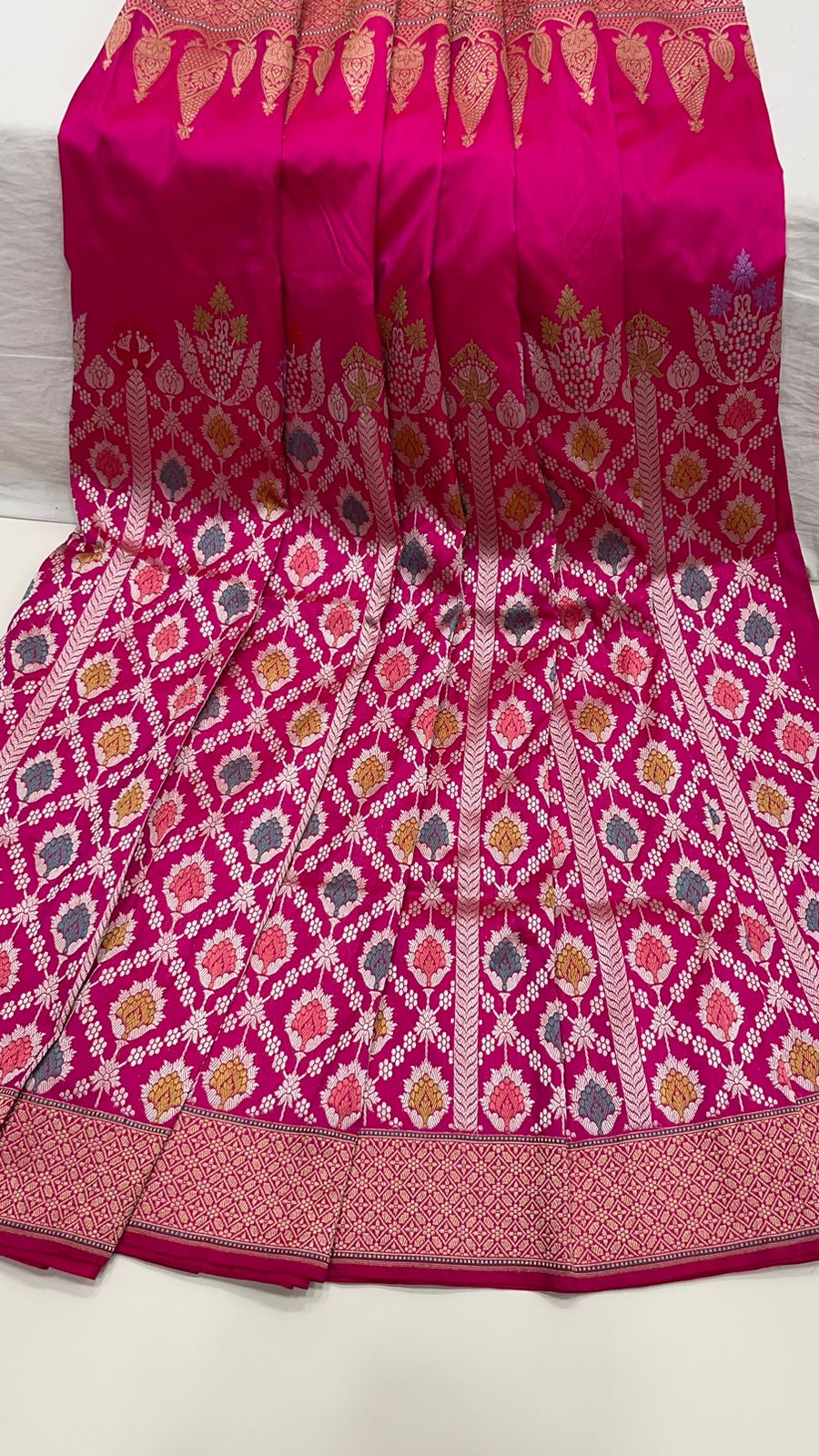



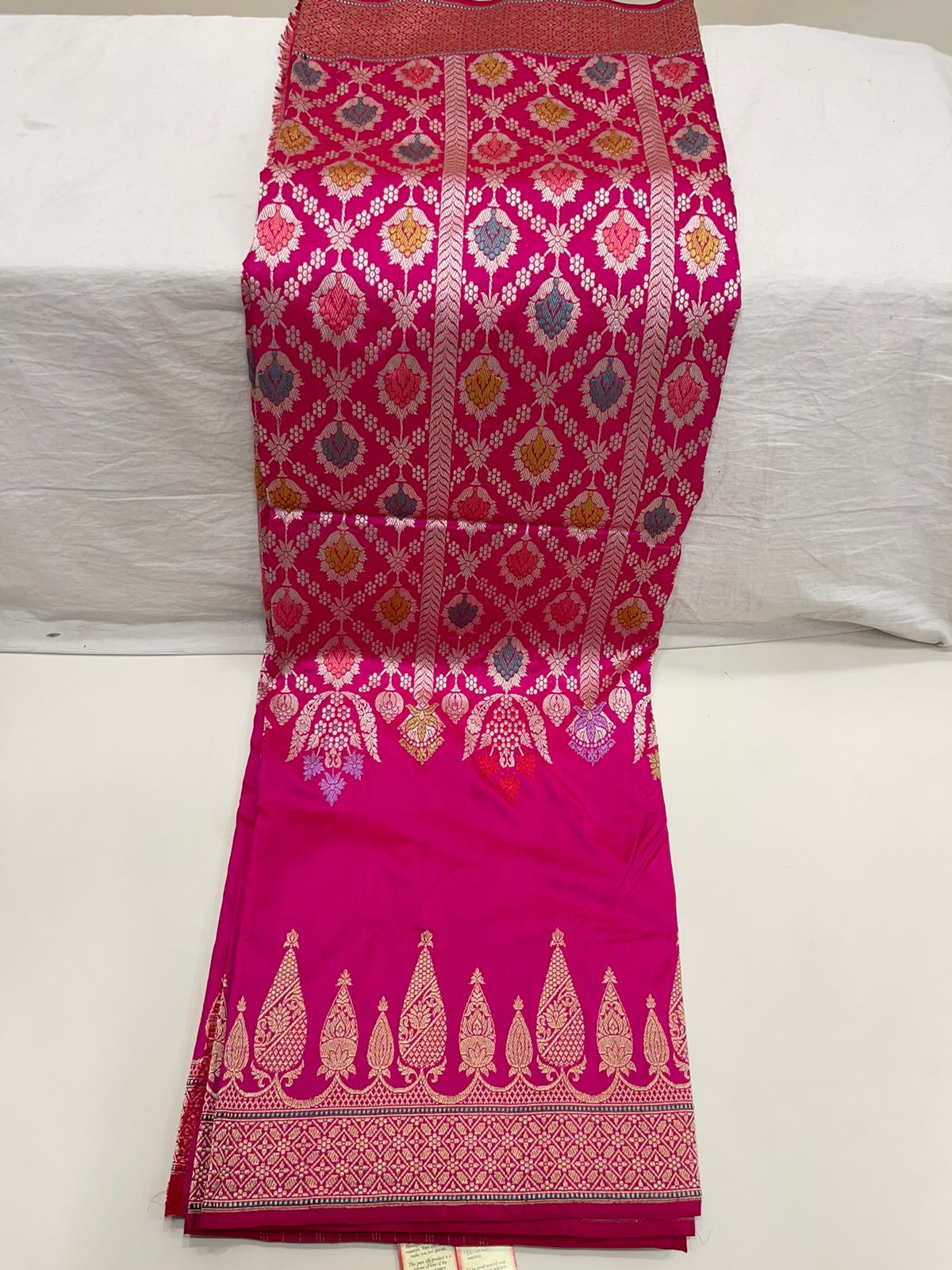
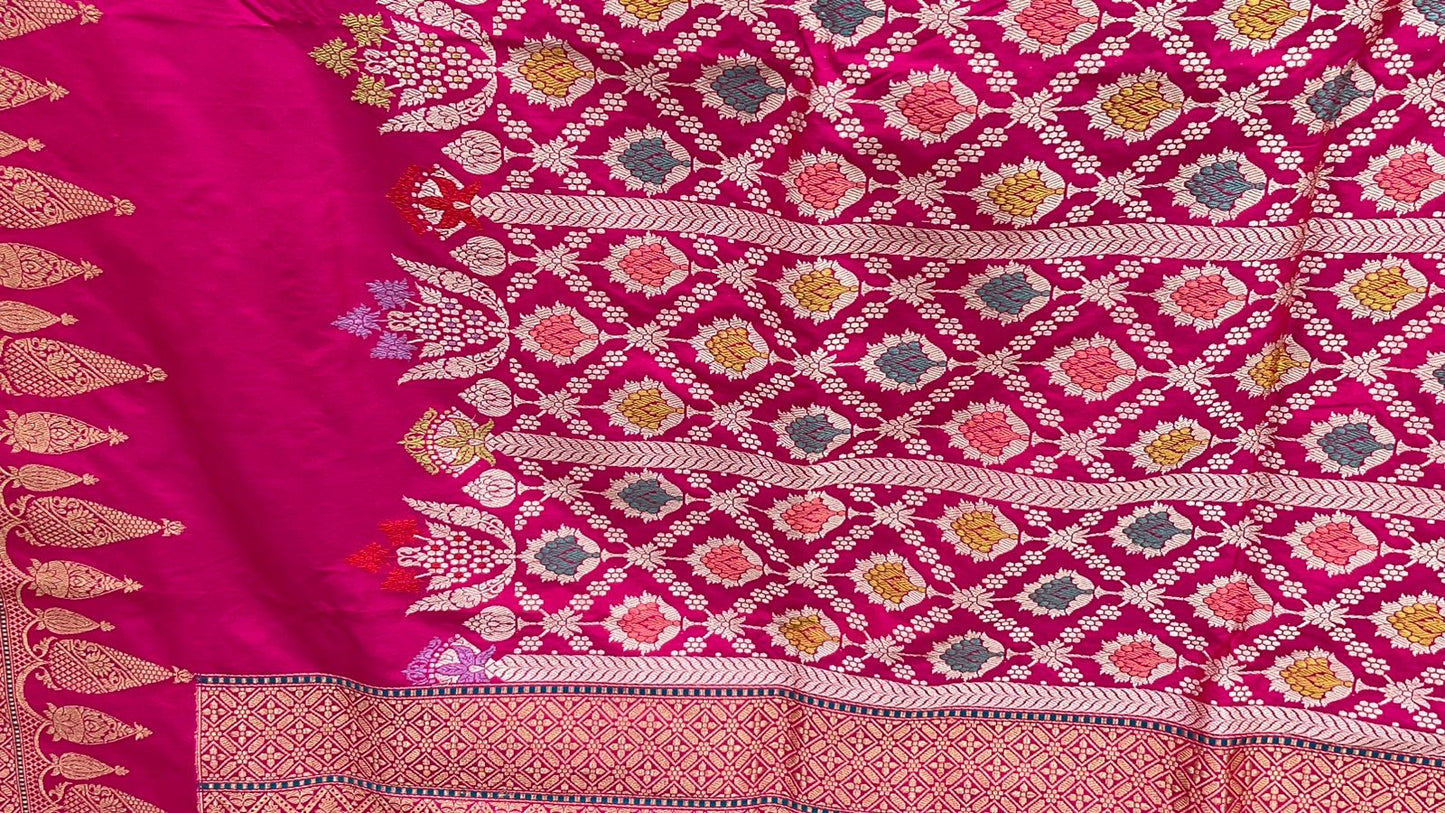
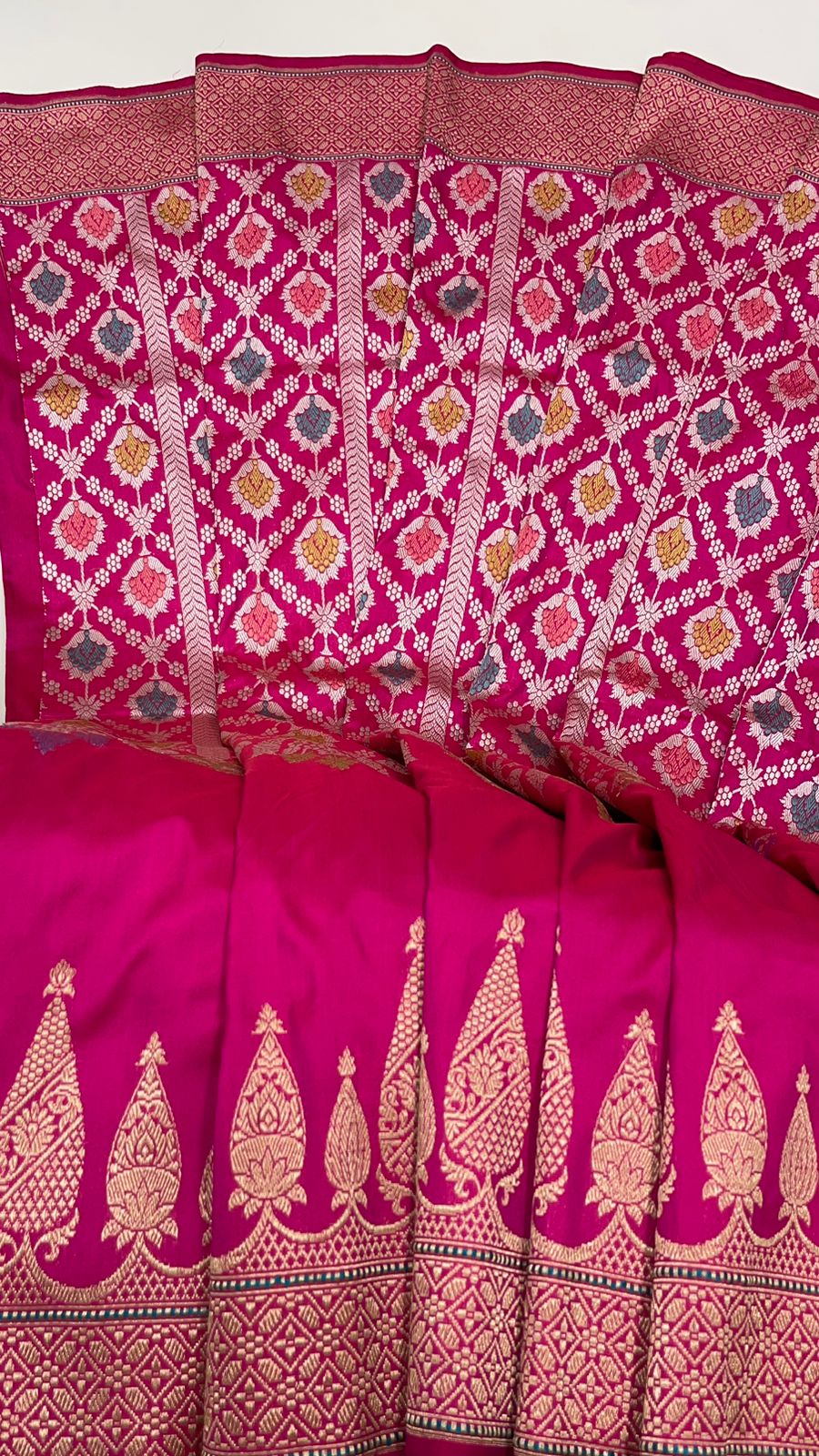
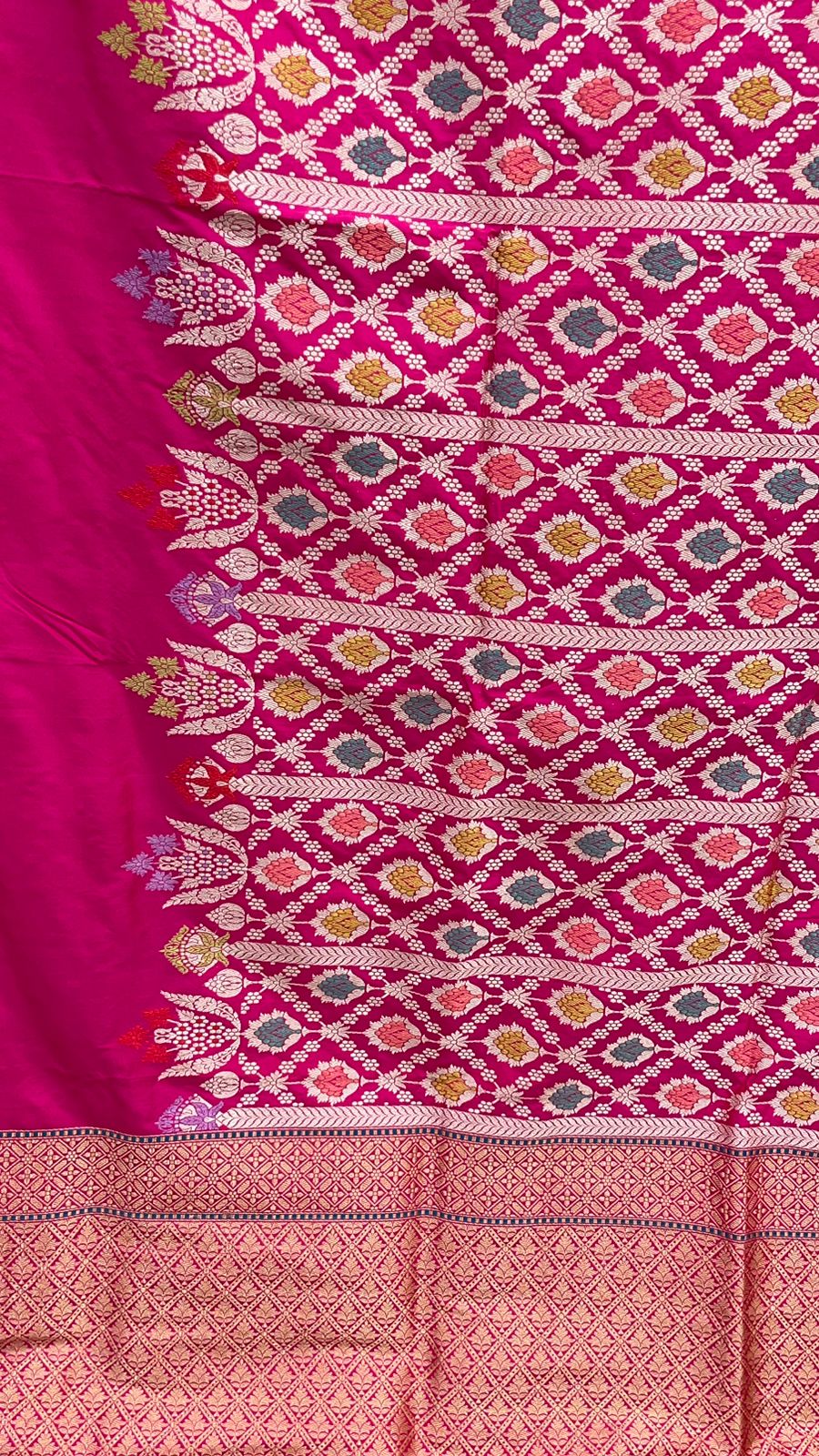


100% Authentic Products | 100% Secure Payments
Elevate your living space with the luxurious touch of our handcrafted artifacts and woven products. Experience the essence of craftsmanship.













